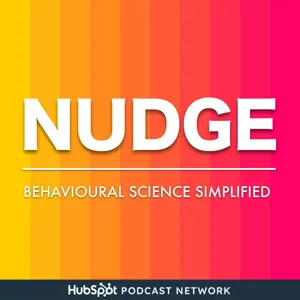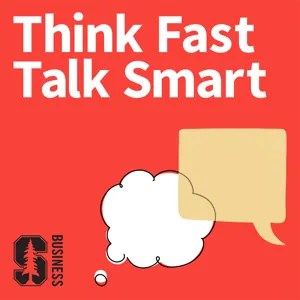Podcast Summary
Applying behavioral science in the real world isn't always simple or effective: Despite the potential of behavioral science insights, translating them to the real world isn't straightforward and not all nudges work as intended, sometimes even backfiring.
Applying behavioral science insights in the real world through nudges isn't always simple or effective. Nina Majar, co-author of "Behavioral Science in the Wild," shared her experiences from BE Works, a behavioral science consultancy focused on helping organizations apply their own nudges. After years of experience, she realized that translating lab findings to the field isn't straightforward. Not all nudges work as intended, and sometimes they even backfire. For instance, the UK's switch from an opt-in to an opt-out system for organ donation, which is known to significantly boost donation rates, didn't yield the expected results in some cases. This complexity isn't widely acknowledged in the practitioner world, leading to potential disappointment and even skepticism towards the value of behavioral science. The "D to C Pod," a podcast about direct-to-consumer businesses, offers insights into the stories behind successful brands and could provide valuable context for those interested in applying behavioral science in practice.
Opt-out organ donation system increases registrations but not necessarily donations: Changing the default to opt-out for organ donation increases the number of registrations but doesn't guarantee more actual donations. Effective communication and family awareness are also essential.
Changing the default from an opt-in to an opt-out system significantly increases the number of organ donors, but it doesn't necessarily lead to more actual donations. For instance, in France, 99.91% of eligible people are signed up as organ donors due to the opt-out system, but Wales, which adopted the opt-out system in 2015, did not see a corresponding increase in donated organs. This is because, when everyone is automatically registered, they may not discuss their wishes with their loved ones, and when the time comes for the family to make the decision, they might not be aware of the donor's wishes, leading to a lower likelihood of donation. Thus, while changing the default is an effective nudge, it's crucial to consider the broader context and adjust other elements of the system to maximize the impact on actual donations.
Publication bias and ethical considerations in defaults: Journals should publish null effects and studies where interventions did not work to provide a balanced view of research and identify factors influencing intervention success or failure.
While defaults can be effective in influencing behavior in controlled experiments, their application in real-world situations can be more complex. Ethical considerations and the challenge of publication bias can make it difficult to determine if defaults are the best solution for every practitioner in every situation. The publication bias, where journals are less likely to publish studies with null or negative results, can lead to a skewed understanding of the effectiveness of interventions like defaults. To address this issue, Nina suggests that journals should publish null effects and studies where interventions did not work. This would provide a more balanced view of the research and help identify common themes and factors that influence the success or failure of interventions.
Challenges in Applying Research Findings: Research findings may not directly apply to real-world situations due to context and limitations. The 'voltage drop' can lead to smaller effect sizes and more noise when scaling research to larger populations.
Not all research findings, even those published in reputable sources, can be directly applied to real-world situations without considering context and potential limitations. The 2018 Harvard Medical School parachute study, which found no significant difference in injury rates between jumpers with and without parachutes, was a satire highlighting the issue of sensationalized and out-of-context findings. However, there's another challenge called the "voltage drop" that arises when trying to scale small-scale research findings to larger populations. This can lead to smaller effect sizes and more noise, as the initial impact may not hold true for the entire population. Research by Elizabeth Linos and Stefano Della Vigna illustrates this difference by comparing average effect sizes from field experiments to those reported in academic papers, revealing significant discrepancies. It's crucial to be aware of these challenges and approach research findings with a critical and context-aware perspective.
The effectiveness of nudges can vary greatly depending on the diversity of the groups they're applied to, resulting in a 'voltage drop': Understanding unique motivations and needs of different groups can help tailor interventions and maximize positive behavior change, mitigating the 'voltage drop' effect.
The effectiveness of nudges, or interventions designed to influence behavior, can drop significantly when applied to diverse groups, a phenomenon referred to as the "voltage drop." A study by the American behavioral insights team, which published all of its findings, including null effects, found an average net positive impact of 8%. However, a meta-analysis of published studies in major scientific journals suggested these nudges should boost behavior by 33.5%. The discrepancy can be attributed to the idealization of test groups in research, and the application of a single intervention to diverse groups in practice. For instance, a study published in Nature showed that revealing doctors' positive attitudes towards the COVID-19 vaccine significantly increased vaccine uptake in Poland. By understanding the unique motivations and needs of different groups, tailored interventions can help mitigate the voltage drop and maximize positive behavior change.
Tailoring interventions for specific groups: Effective interventions for large populations depend on audience specificity, requiring tailored approaches and acknowledgement of population heterogeneity.
When it comes to influencing large populations, the effectiveness of interventions can vary greatly depending on the specific audience. A study showing that a doctor's recommendation increases vaccine uptake threefold in a small focus group may not have the same impact on a nationwide campaign. This is due to the fact that the attention and engagement levels in the focus group were likely higher due to the payment and purpose of the study. To overcome this issue, it's essential to tailor interventions to specific groups and expect that one size won't fit all. This approach acknowledges the heterogeneity of populations and the importance of understanding which interventions work best for which groups. Additionally, scientists and practitioners must pay more attention to the nuances of interventions and their impact on different populations rather than relying on an average intervention for all.
Using social norms and loss framing to boost tax compliance: Social norms and loss framing can significantly increase tax compliance by creating a sense of peer pressure and triggering loss aversion, respectively.
Using social norms and loss framing in tax compliance messages can significantly increase the number of people who pay their taxes on time. The use of social norms creates a sense of peer pressure and can make individuals feel that they are part of the majority who comply with their tax obligations. Loss framing, on the other hand, triggers loss aversion and can motivate people to act to avoid losing out on benefits or facing negative consequences. The British Behavioral Insights Team and Nina's study in Guatemala both demonstrate the effectiveness of these nudges in increasing tax compliance. While loss framing can be effective, it's important to note that it may not be ethical to use it in an incentive framework as shown in the study where both gain and loss incentives increased productivity, but the loss incentive had a more significant impact. Instead, using loss framing in messaging can be a powerful tool to encourage tax compliance.
Tailoring interventions for specific contexts and audiences: Understanding motivations and reasons behind behaviors can help design effective interventions, but not all interventions will work in every context. Testing and evaluation are crucial to determine effectiveness.
While certain interventions may be effective on average, it's essential to consider the specific context and audience when designing behavior change campaigns. For instance, deterrence messages may work well for parents, but not for all groups. Public goods messages might be effective in rural areas but less so in urban areas. Understanding the underlying motivations and reasons for certain behaviors can help tailor interventions to be more convincing and effective. However, it's important to remember that not all interventions will work in every context, and it's crucial to test and evaluate their effectiveness. The use of social norm messages, for example, which have been successful in various contexts, did not work as well in the study discussed. Researchers should focus not only on the effects of interventions but also on the mechanisms behind them to better understand why some interventions work in certain contexts and not others.
Understanding the impact of suggested donation amounts on giving: Charities should test different anchor amounts before implementing them to ensure they're effective, as individual differences can impact the anchoring effect.
While suggested donation amounts, or anchors, can influence people to give more due to the anchoring effect, it's not a guaranteed strategy for charities like Save the Children. The impact of anchors can vary depending on the type of donor, and setting a high anchor might discourage some people from donating altogether. Therefore, charities should test different anchor amounts before implementing them to ensure they're effective. This principle applies not only to charities but also to various other contexts where nudges are used. Nina Mazar, a behavioral scientist, emphasizes the importance of testing interventions before implementation to account for individual differences. Her book, "Behavioral Science in the Wild," offers valuable insights on applying nudges in real-world situations. Although this episode was more behaviorally science-focused than usual, it's essential to understand the complexities of using nudges effectively.
Learn more about effective and ineffective nudges from Nina's work: Sign up for Phil Agnew's newsletter to access the full interview with Nina and gain deeper insights into behavioral science and effective nudges
Learning from this episode of Nudge is that if you're interested in diving deeper into the application of behavioral science and want to learn more about effective and ineffective nudges, as well as Nina's work, sign up for Phil Agnew's newsletter to access the full interview with Nina as a bonus episode. This chat is filled with valuable insights and detailed information that goes beyond what was covered in this episode. To access the bonus episode, simply click the link in the show notes and sign up for the newsletter. Existing subscribers can also access the bonus episode by following the same link and signing up again. Don't worry about being subscribed twice, the system will check and prevent that from happening. So, if you're eager to learn more about behavioral science and how to apply it effectively, sign up for the newsletter and listen to the bonus episode. It's a great opportunity to gain a deeper understanding of the topic.




